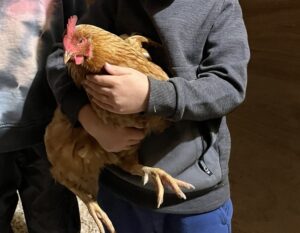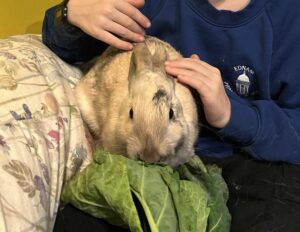Animal Care in Homeschool
Extra curricular education
I often have these thoughts on our busier days, when I’m trying to keep on top of dishes or laundry (who am I kidding – this never happens until weekend), that I should be doing classes with my boys. They will be cuddling their pet, playing, or reading, or drawing or crafting or looking for the frog in our garden, and I’ll be at the dishes thinking, I should be doing homeschool… Of course, seeing it written down like this, it seems so ridiculous. But in the moment, it’s a real thought, and a real concern. All the topics I had hoped to cover this week, and all the jobs and experiences I had that day, for them, and for me. Perhaps now I’ve written it down now I can remember to relax into the beauty that can be found through homeschool. But perhaps it’s like learning to relax into a bike ride, or a run, or a camping trip. If you’re not used to it, it takes a while.
https://thereisnoshouldbe.com/slow-living-and-valuable-work-of-the-home/
Animal care as part of homeschool curriculum
 One part of home life we particularly enjoy is our animals. Now on our homeschooling journey they take so much time and enjoy them. My children adore their animals. One cuddles his hamster – there’s often his hamster in his hoody pocket. Another curls up with our oversized labradoodle and copies his ET noises. And another fusses over his rabbit. All that said, our 3 chickens, might be the most enduring of our animals – there is often a chicken tucked under the arm of my youngest as they settle in a nest of hay in the hay barn. Yes he often needs a whole new outfit when he comes in.
One part of home life we particularly enjoy is our animals. Now on our homeschooling journey they take so much time and enjoy them. My children adore their animals. One cuddles his hamster – there’s often his hamster in his hoody pocket. Another curls up with our oversized labradoodle and copies his ET noises. And another fusses over his rabbit. All that said, our 3 chickens, might be the most enduring of our animals – there is often a chicken tucked under the arm of my youngest as they settle in a nest of hay in the hay barn. Yes he often needs a whole new outfit when he comes in.
For the child and the parent
I appreciate greatly the wonderful lessons they’re learning with their animal friends. Animal care really is so valuable for those who are so inclined, and it is a comfort to know that they can relax, low-hype style. Sometimes I sit with them as they do, and validate the time spent just enjoying their animals. And sometimes I’m buzzing around getting on top of things. With all of the benefits animal care gives I feel sure that if it was feasible it would most certainly be a major part of any school’s curriculum, but as much nature based learning, it’s not really feasible.
Benefits of animal care
Relationships
 Here are some thoughts on what I’ve observed my children learning with their animals as they engage in animal care: relationships. They learn to notice what they hope to expect from their (animal) friend. And they learn that their friend can expect the same appreciation back. Animals can be nippy or jumpy, bolshy or feardy.
Here are some thoughts on what I’ve observed my children learning with their animals as they engage in animal care: relationships. They learn to notice what they hope to expect from their (animal) friend. And they learn that their friend can expect the same appreciation back. Animals can be nippy or jumpy, bolshy or feardy.
The children can notice that they don’t want to be bitten, or run away from. And they can learn that for this privilege, they need to treat the animal within the boundaries that the animal can enjoy and accept. They begin to notice how their behaviour is being perceived by the other, and begin to adjust their communication.
Communication and boundaries
This lesson of respecting boundaries is so important for children, and even more so, it can be for children with neurodiversity. With such a stimulating world around us, I find neurodiverse children can often be in a state of reacting, rather than responding. But we are required to respond to our animals’ cues, and only handle them in a way that they are comfortable with. We need to pay attention and respect the boundaries our non verbal pets communicate, and this can be intrinsic for people with neurodiversity. It is intrinsic because non verbal, sometimes indirect communication can be where we shine, and are able to demonstrate our ability for empathy and engagement.
Hugs – and Mary Temple Grandin’s squeeze chute
 The children benefit more than first meets the eye when they are cuddling their little ones. Mary Temple Grandin invented the ‘squeeze chute’, or ‘hug box’ in 1965 – a machine designed to squeeze people who struggled with a particularly sensitive nervous system. The squeezing machine would help stimulate regulation of the nervous system. With the machine being approximately the size of an upright piano, scientists are now designing a squeeze vest that applies pressure in particular places to try and replicate the beneficial effects of the squeeze chute. Clearly they had it right when they named it ‘hug box’, but for some reason, no one is willing to call it the hug vest… Upon finding this information I began to notice how much tight, squeezy hugs greatly assist in regulating their nervous systems.
The children benefit more than first meets the eye when they are cuddling their little ones. Mary Temple Grandin invented the ‘squeeze chute’, or ‘hug box’ in 1965 – a machine designed to squeeze people who struggled with a particularly sensitive nervous system. The squeezing machine would help stimulate regulation of the nervous system. With the machine being approximately the size of an upright piano, scientists are now designing a squeeze vest that applies pressure in particular places to try and replicate the beneficial effects of the squeeze chute. Clearly they had it right when they named it ‘hug box’, but for some reason, no one is willing to call it the hug vest… Upon finding this information I began to notice how much tight, squeezy hugs greatly assist in regulating their nervous systems.
However, it’s not quite as simple – many autistic people are not able to tolerate physical affection, (where they benefitted from the squeeze chute). Animals in children’s lives, with all their hugs, are great for regulating emotions and nervous systems.
Grit and work – self application
 Another benefit I’ve noticed with my children and their animal care is the need to apply themselves to valuable daily tasks. These tasks of cleaning their set up, refreshing their bedding, feeding them and giving them clean water every day are of immediate and very short term consequence. It is simultaneously vital, and fleeting. The same jobs need doing the very next day, often again the same evening! Children applying themselves daily for the benefit of another being, just putting themselves to a dusty job, is such a great lesson in endurance and strength of character. And the more they interact with their pets, daily, the more confident they become, handling them, getting a valuable job done, and asserting themselves.
Another benefit I’ve noticed with my children and their animal care is the need to apply themselves to valuable daily tasks. These tasks of cleaning their set up, refreshing their bedding, feeding them and giving them clean water every day are of immediate and very short term consequence. It is simultaneously vital, and fleeting. The same jobs need doing the very next day, often again the same evening! Children applying themselves daily for the benefit of another being, just putting themselves to a dusty job, is such a great lesson in endurance and strength of character. And the more they interact with their pets, daily, the more confident they become, handling them, getting a valuable job done, and asserting themselves.
Health and hygiene
 This is quite funny, because one might think that with so many animals in our homes we could have a cleaner environment.. But, children learn so much doing their animal care. They learn about basic needs and hygiene. They learn about the food chain and where their pet originated from, and what kind of food and terrain their pet would have been used to. They learn that hamsters wash in sand, and dogs, well they roll around for a good scratch, and rabbits wash themselves with their paws. And they learn the joyous lessons of life, and the difficult lessons of death.
This is quite funny, because one might think that with so many animals in our homes we could have a cleaner environment.. But, children learn so much doing their animal care. They learn about basic needs and hygiene. They learn about the food chain and where their pet originated from, and what kind of food and terrain their pet would have been used to. They learn that hamsters wash in sand, and dogs, well they roll around for a good scratch, and rabbits wash themselves with their paws. And they learn the joyous lessons of life, and the difficult lessons of death.
Creativity – building boxes and nooks
The last benefit I’ve noticed with my children’s enjoyment of their animals, is the joy and excitement they find with their pet. But it isn’t a hyped up type of attention. It is a grounded, contented type of excited attention, where they watch as, for example, their animal washes himself, around the nose, behind the ears, knowing that they are witnessing their special pet relax by them.
They make courgette houses and obstacle courses. They make cardboard box hidey hole hay nests for their rabbits, and they wait and watch as their pet explore, or settle in, or eat the creations.
All to say…
 It is truly a joy for them and for me, our animal care homeschool, even though I wouldn’t call it that while I’m doing the dishes. I can content myself of that – while my children are caring for their little ones, there is no should be doing homeschool, necessarily.
It is truly a joy for them and for me, our animal care homeschool, even though I wouldn’t call it that while I’m doing the dishes. I can content myself of that – while my children are caring for their little ones, there is no should be doing homeschool, necessarily.


Pingback: Children in the garden - My Blog